BinaryMuseGAN
Results
Qualitative Results
Note that only the guitar track is shown.
| Strategy | Result |
|---|---|
| raw prediction of the pretrained G |
 |
| Bernoulli sampling (at test time) |
 |
| hard thresholding (at test time) |
 |
| proposed model with SBNs |
 |
| proposed model with DBNs |
 |
Quantitative Results
Evaluation metrics
- Qualified note rate (QN) computes the ratio of the number of the qualified notes (notes no shorter than three time steps, i.e., a 32th note) to the total number of notes. Low QN implies overly fragmented music.
- Polyphonicity (PP) is defined as the ratio of the number of time steps where more than two pitches are played to the total number of time steps.
- Tonal distance (TD) measures the distance between the chroma features (one for each beat) of a pair of tracks in the tonal space proposed in [1].
Comparisons of training and binarization strategies
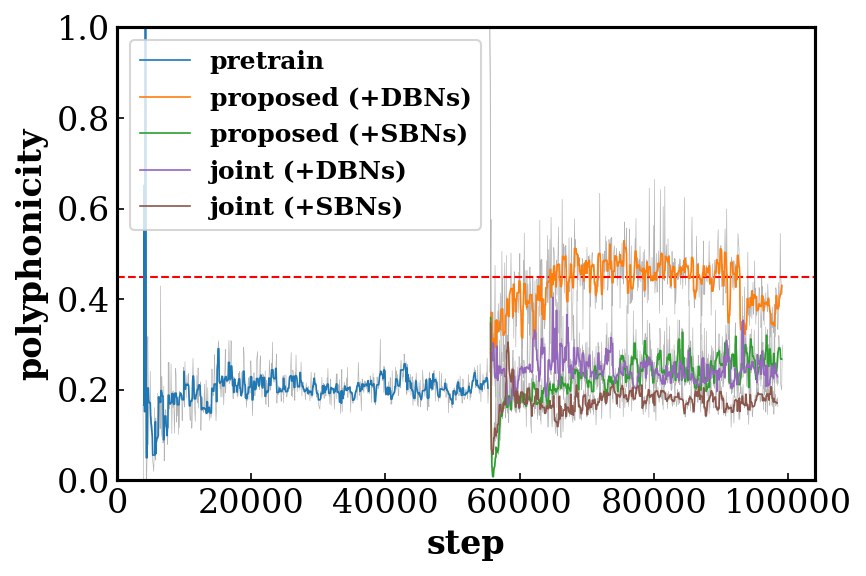
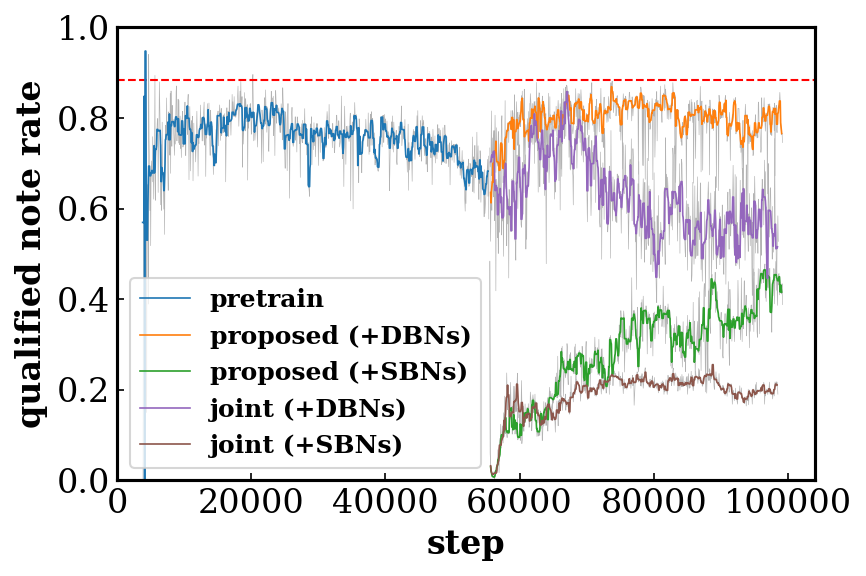
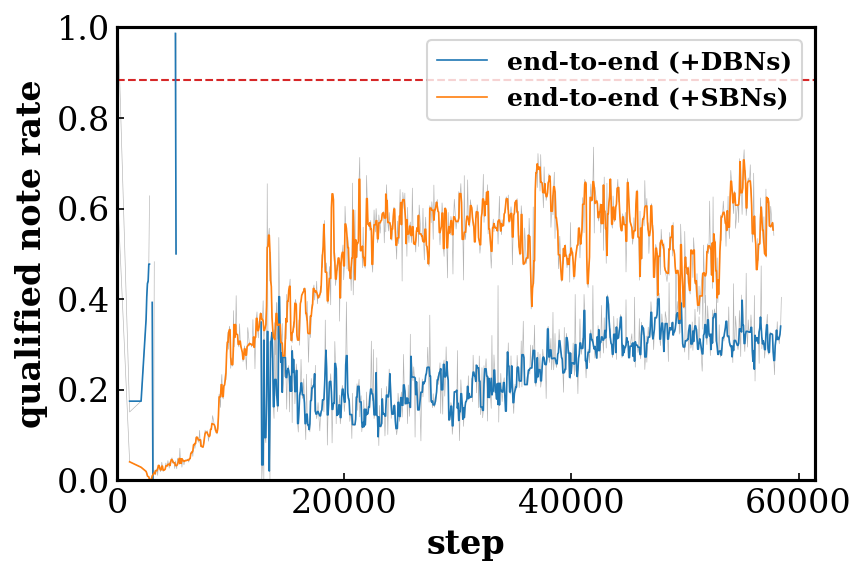
Effects of the shared/private and multi-stream design of the discriminator
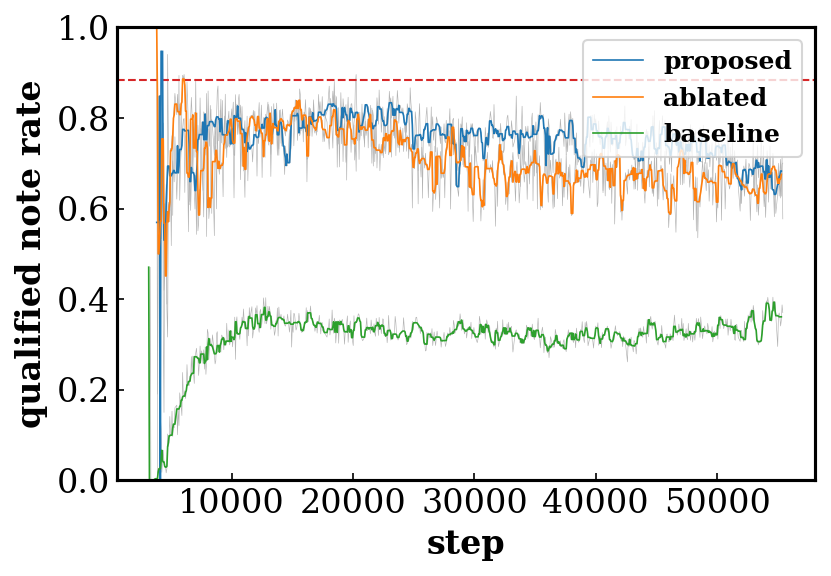
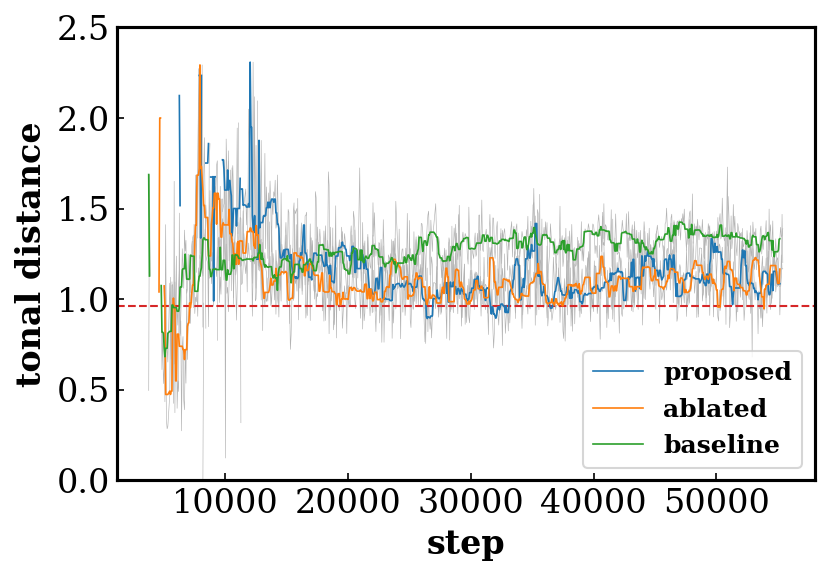
Audio Samples
The audio samples presented below are in a high temporal resolution of 24 time steps per beat. Hence, they are not directly comparable to the results presented on the MuseGAN website.
No cherry-picking. Some might sound unpleasant. Lower the volume first!
| Model | Result |
|---|---|
| hard thresholding (at test time) | |
| Bernoulli sampling (at test time) | |
| proposed model (+SBNs) | |
| proposed model (+DBNs) | |
| end-to-end model (+SBNs) | |
| end-to-end model (+DBNs) |
Reference
- Christopher Harte, Mark Sandler, and Martin Gasser, “Detecting Harmonic Change In Musical Audio,” in Proc. ACM MM Workshop on Audio and Music Computing Multimedia, 2006.